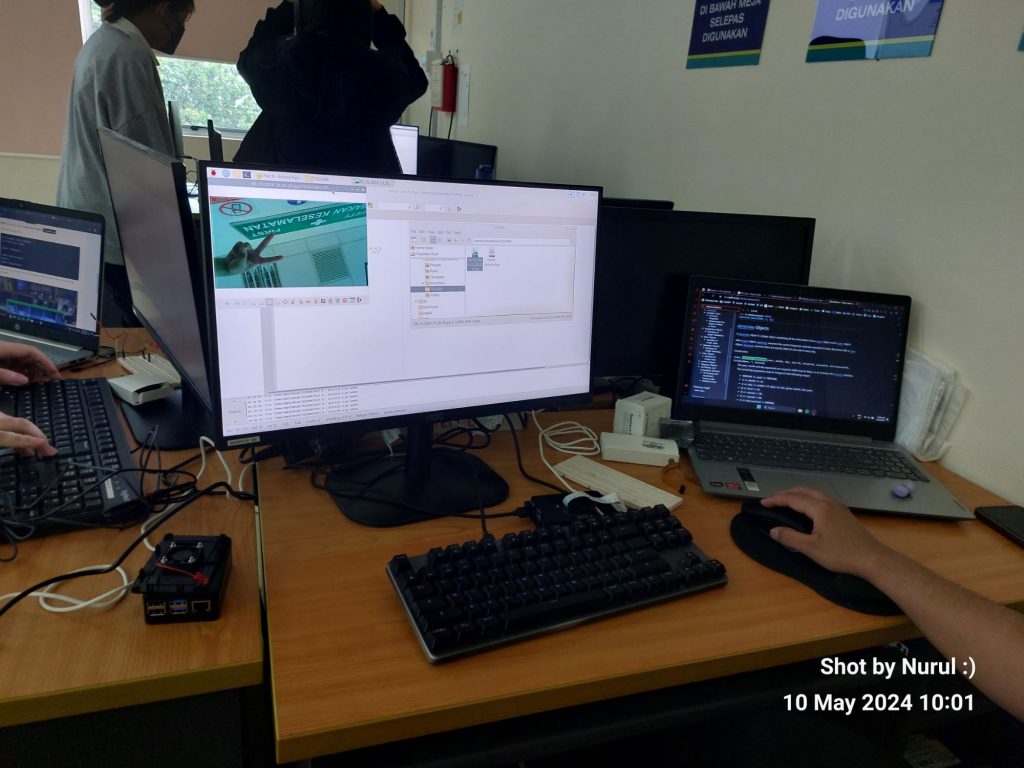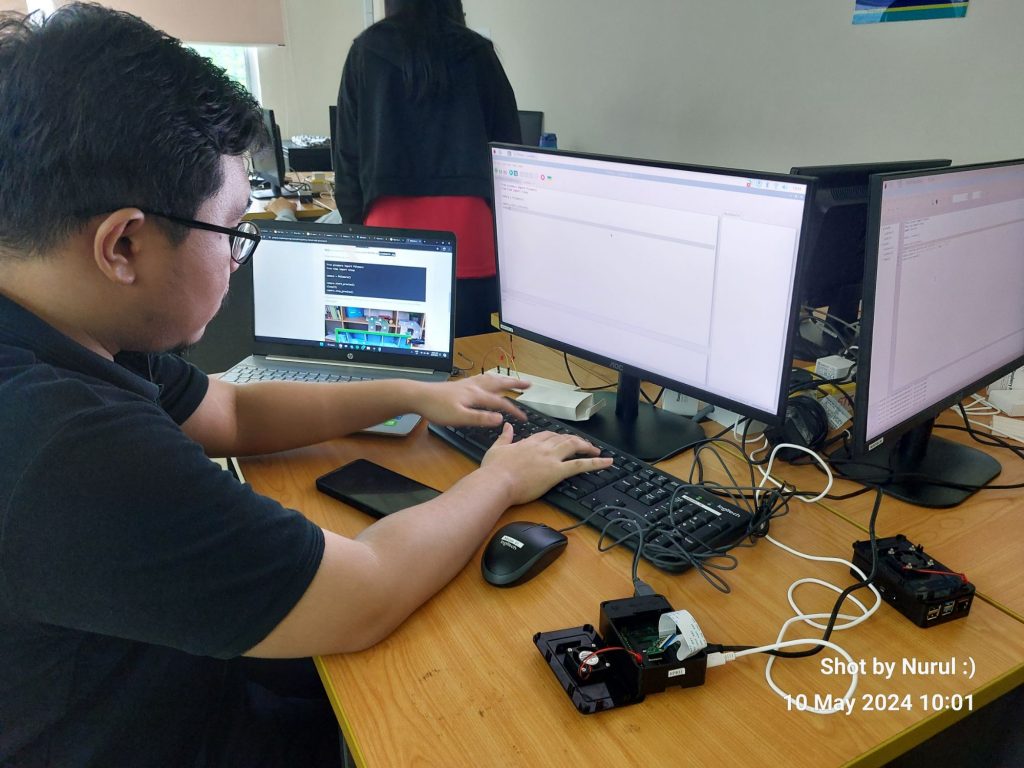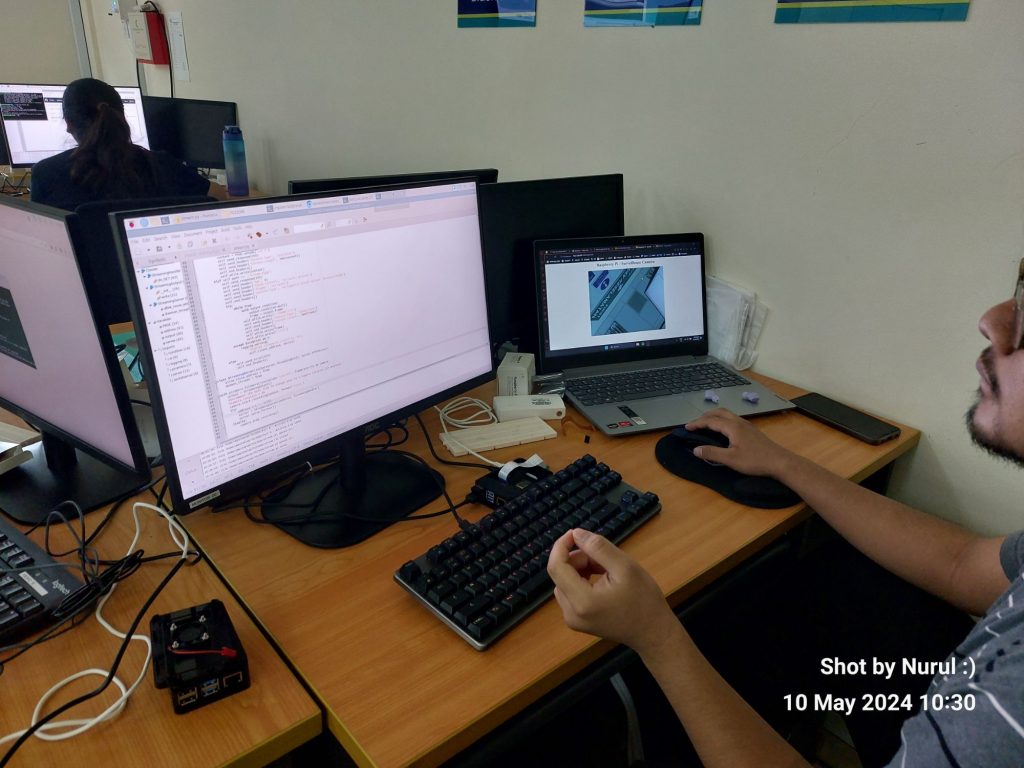In today’s BTE1522 session, we looked into the multimedia capabilities offered by the Raspberry Pi. Step 6 and Step 7 of our hands-on activities took us through the exciting journey of photo capture, video recording, and local video streaming.


Photo Capture and Video Recording
In this step, our focus was on harnessing the power of the Raspberry Pi camera module to capture photos and record videos using Python. The learning outcomes were twofold: exploring multimedia capabilities and mastering Python programming for media tasks.
Photo capture using the Raspberry Pi camera module enables users to capture high-quality images directly from their Raspberry Pi devices. This functionality is very useful in projects requiring visual documentation, such as surveillance systems, wildlife monitoring, and environmental monitoring. With Python programming, users can customize photo capture settings, automate image capture based on predefined conditions, and integrate photos into larger projects seamlessly.
Innovative Uses includes –
- Home Security Systems: Raspberry Pi-based home security systems leverage photo capture to monitor and record activities in and around the premises. Motion detection algorithms can trigger photo capture, providing users with real-time updates and alerts on their mobile devices.
- Environmental Monitoring: Researchers and environmental enthusiasts utilize Raspberry Pi cameras to capture images of wildlife, plant growth, and environmental changes over time. These images contribute to scientific studies, ecological research, and conservation efforts.
- Digital Signage: In retail and hospitality industries, Raspberry Pi-powered digital signage solutions incorporate photo capture to display dynamic and engaging content. Captured images of products, services, or promotions enhance the visual appeal of digital displays and attract customers’ attention.
Local Video Streaming
Moving forward, we explored the basics of video streaming and implemented local video streaming on the Raspberry Pi. This step aimed to broaden our understanding of multimedia applications and introduce the concept of live video streaming.
Video streaming on the Raspberry Pi enables users to transmit live video footage over a network, facilitating real-time communication, monitoring, and collaboration. This functionality finds applications in remote surveillance, video conferencing, educational webinars, and live event broadcasting. Using the power of Python and video streaming libraries, users can create customized video streaming solutions tailored to their specific needs.
It’s innovative work includes:-
- Remote Surveillance Systems: Raspberry Pi-based surveillance systems stream live video footage from multiple cameras to a centralized monitoring station. Users can access live feeds remotely via web browsers or mobile applications, enhancing security and surveillance capabilities.
- Educational Webinars: Educators and trainers leverage Raspberry Pi video streaming capabilities to conduct interactive webinars, lectures, and workshops. Live video streams facilitate real-time engagement, Q&A sessions, and collaborative learning experiences for participants.
- Live Event Broadcasting: Raspberry Pi devices equipped with cameras and streaming capabilities enable users to broadcast live events, performances, and conferences to a global audience. Whether it’s a music concert, sports match, or corporate event, live video streaming enhances audience reach and engagement.
This activities today laid the foundation for more advanced streaming applications and paved the way for further exploration in multimedia development. By the end of these activities, students gained valuable insights into the multimedia capabilities of Raspberry Pi and develop their Python skills for media-related tasks. They left the session equipped with the knowledge and confidence to embark on more ambitious multimedia projects in the future.

Stay tuned for our next session as we continue our journey into the world of innovation with Raspberry Pi!



